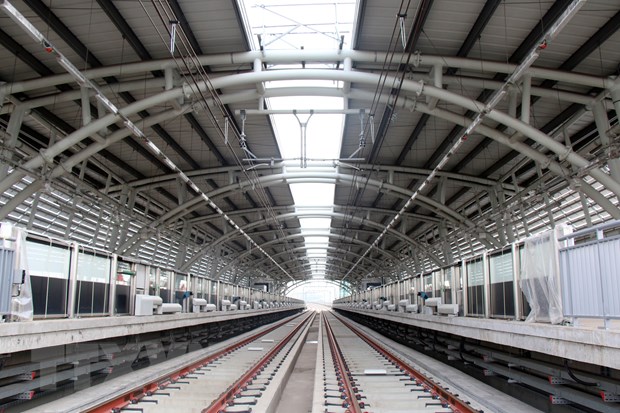 Society
Society


|
| All main parts of the HCM City National University Station are nearly completed. — VNA/VNS Photo Tiến Lực |
HCM CITY — It is expected that by March this year, all 11 flyover stations of the Bến Thành-Suối Tiên metro will be completed, according to the HCM City Management Authority for Urban Railways (MAUR).
Engineers and workers are installing and finishing the station elevators, including metal frames, ticket offices and glass balustrades at the main entrances of the stations.
The MAUR said that it was cooperating with the Hitachi Company to complete automatic and safety systems at the stations.
Hồ Trần Công Triều, from the NJPT consultants, said that about 600-700 workers were finishing construction.
It is scheduled that the workers will be off for the Tết (Lunar New Year) holiday from Thursday and back to work next Friday.
The Bến Thành-Suối Tiên metro project was initially scheduled for completion in late 2021 to run commercially in 2022. However, it has been delayed several times due to the pandemic and procedural problems.
With an expected investment of more than VNĐ43.7 trillion (US$1.89 billion), the metro line is funded by Japanese overseas development assistance and Vietnamese counterpart funds.
It is about 19.7km in length with three underground stations, including Bến Thành, HCM City Opera House, Ba Son, and 11 flyover stations, including Văng Thánh, Tân Cảng, Thảo Điền, An Phú, Rạch Chiếc, Phước Long, Bình Thái, Thủ Đức, High-tech Zone, HCM City National University and Suối Tiên Terminal.
After 10 years of construction, around 94 per cent of the metro line has been completed.
The first test ran on nine kilometres of elevated track between Suối Tiên Station and Bình Thái Station on December 21 last year.
The elevated section is designed for trains to run at a speed of 110 kilometres per hour, but during the test run the train ran at a speed of 40kph.
All 17 trains have 147 seats and a capacity of 930 passengers. They can run at speeds of up to 80km underground. — VNS